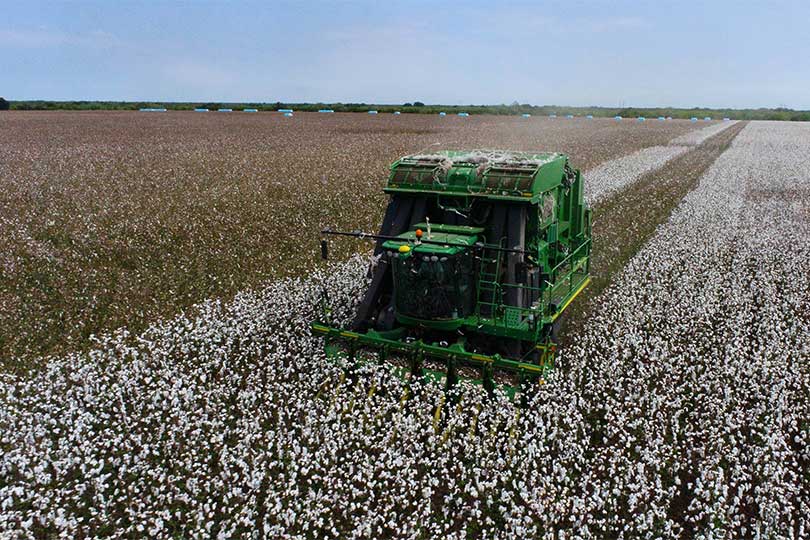By Emmy Powell
Communications Specialist
Where one farmer has some, another has next to none.
That’s the case for this year’s cotton crop. It varies widely across the state, with some farmers harvesting five-plus bales to the acre and others picking a little over a bale per acre.
Ted and David Kohlleppel, a father-son duo in Medina County, estimated they’ll harvest about five bales to the acre, and maybe even a little more, on their irrigated cotton. That was all thanks to good rainfall at the right time.
“We had a nice five-inch rain in January that put some sub-moisture down, so we were fortunate for that,” David told Farm Progress.
But yields weren’t as good as they hoped for other Texas farmers like Nick Pinkston.
The San Patricio County farmer said he had a mediocre crop at best.
“The eastern half of the county had some pretty good cotton, but the western side wasn’t that great,” Pinkston said. “We started off with plenty of moisture, and we had good stands. Everything looked really good, and then it just never rained again.”
Hurricane Beryl missed Pinkston, but heavy rains fell closer to harvest, and that impacted the quality of this year’s cotton crop.
“The quality was really good before it was rained on,” Pinkston said. “Then, we had a spell where it stayed wet for a while, and we had 10 to 12 inches on some areas. It wasn’t very good after that.”
His yields averaged a bale-and-a-half per acre.
Although it varies greatly across the state, Texas A&M AgriLife Extension specialists expect most of the Texas cotton crop to have better yields and quality than the previous two years.
AgriLife specialists expect many early planted fields to produce 1.5-plus bales per acre, and yields of two bales per acre have been reported in some later planted fields.
For cotton farmers in the High Plains, recent rains were a sign of relief. AgriLife agronomists said many farmers are waiting to see if timely rains appear to help finish fiber development.
East Texas farmers saw reduced cotton acres this season due to early hailstorms and abundant rainfall. Irrigated cotton yields are anticipated to be average.
Cotton acres are also slightly down in Central Texas and yields are expected to be average, according to AgriLife agronomists.
South Plains cotton farmers are expected to rebound from the last two years of drought and harvest around 3 million acres. Rains during planting and stand development, along with mild temperatures, helped the crop.
Cotton market
Another concern for Pinkston and other cotton farmers alike is the current market.
“If the market doesn’t go up, other farmers around me say they’re really going to cut back next year,” Pinkston said. “When farmers cut back on their cotton, that hurts everybody else. It hurts the gins, all the guys who have trucks to transport it. There’s a ripple effect.”
Add high input costs and inflation to the low commodity prices, and farmers are facing a tough outlook.
A modernized farm bill that factors in the skyrocketing inflation, supply chain challenges and weather disasters like drought would provide farmers with some certainty. But time is running out to pass a bill before the one-year extension expires on Sept. 30.
“It’s time lawmakers work in a bipartisan manner and pass a farm bill that addresses the challenges farmers now face since the last bill was passed in 2018,” said Brant Wilbourn, Texas Farm Bureau associate director of Commodity and Regulatory Activities.


Leave A Comment